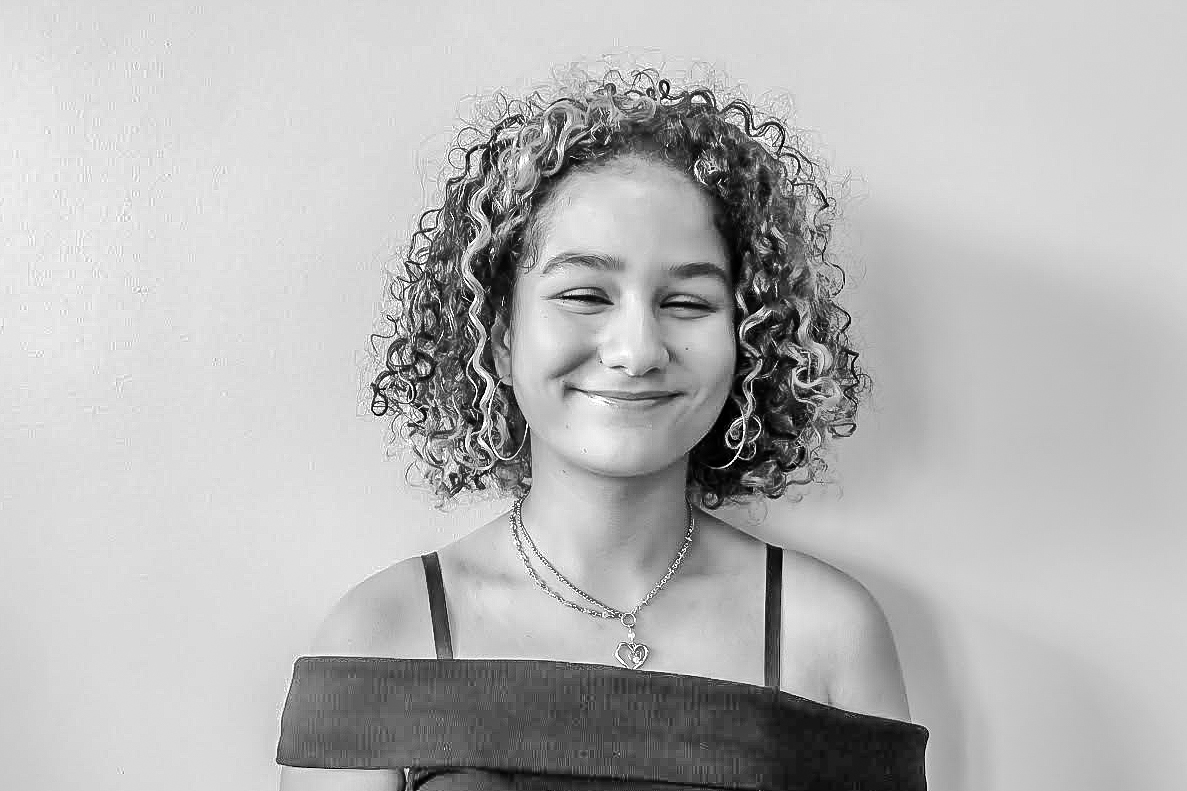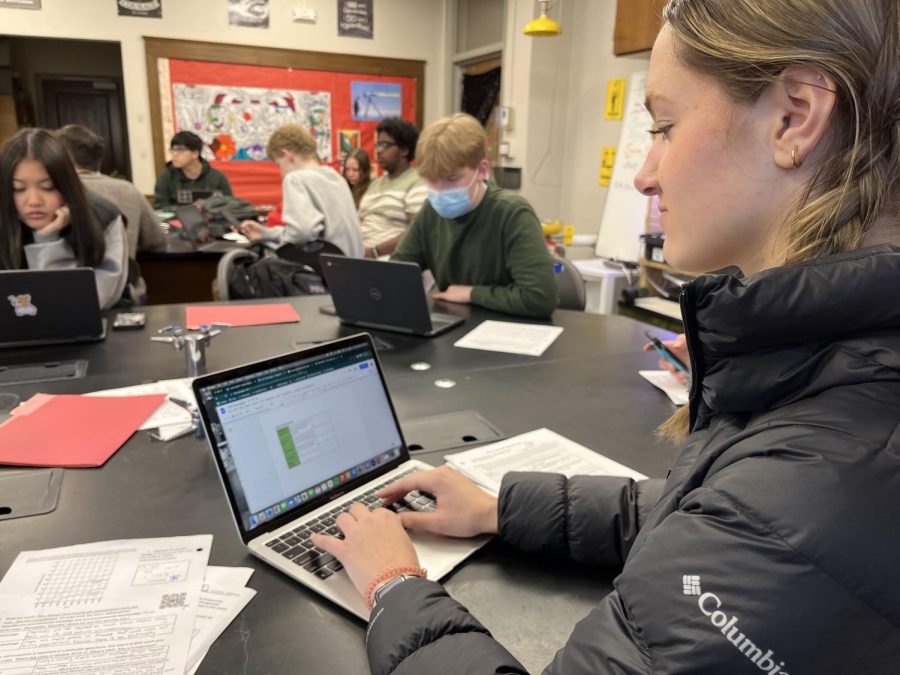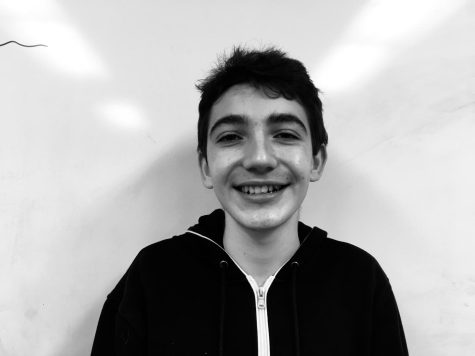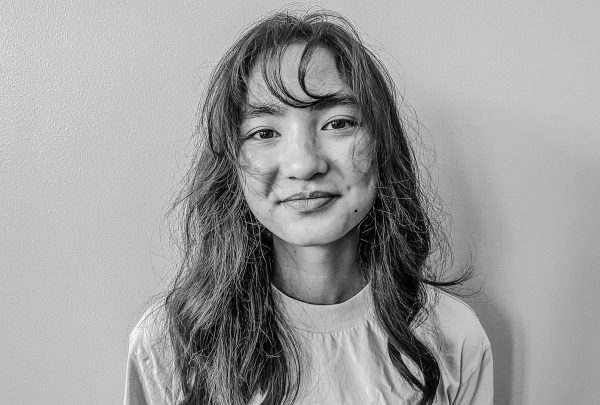Budding Interest In AP Environmental Science
APES enrollment has more than doubled since last year
Grace Kirschling ’24 works on her AP Environmental Science one-pager
February 28, 2023
There is a long tradition of activism from students at City High. Iowa City’s regular stop among national political campaigns has often made it the site of protests ranging from Black Lives Matter in 2020 to abortion rights events just last year. A series of student lead protests in 2019 for Climate Action was a direct cause of several actions from the City and School Board after activist Great Thunberg came to Iowa City. One direct change that ICCSD did as a result of those protests was the addition of AP Environmental Science as a course offered in all three high schools.
“I had expressed interest for years before that, to have the AP Environmental Science course added, however, it wasn’t until we had student interests that really drove it to course creation,” Lestina said.
Lestina explained that City High has an Environmental Analysis class when she first started teaching in 2000, but it got cut within her first 10 years in the building. Although the class went away, she emphasized that student interest in the environment remained the whole time.
“Students have always been interested in the environment here at City High, so it’s a great opportunity for students who are in chemistry or have already taken chemistry to take an upper-level AP class,” Lestina said.
Although the class was originally targeted towards juniors and seniors because biology is the only required class to be completed beforehand more sophomores who choose to double up on science are enrolled in the class this year. That has led to a boost in overall enrollment in the class from 32 City High students in two class periods taking the class during the 2021-22 academic school year to 67 students across three periods this year. Although not as intense as some of the other AP classes, Connor McDowell ‘23 sees the class as a chance for sophomores to take an upper-level science for the first time.
“It’s a really good sophomore class as a first AP. I think it’s just a good idea to take it, especially with how the world is trending,” McDowell said.
In addition to teaching AP Environmental Science (often abbreviated as APES), Lestina is also the club sponsor for both the Environmental and Gardening Clubs which she says have taken a variety of names throughout her time. Lestina was selected for the development of the course partially from her work with environmental science during her master’s degree. She credits the big jump in numbers this year largely to the awareness that has been built around the class and the reputation it has for hands-on experiments.
“I think it’s accessible to a lot of students. The more people hear about it, the more interest has really grown. I think that helps when they see when students see each other involved in it,” Lestina said. “I think even having the visibility of the greenhouse helps let students see what’s going on. A lot of times I’ll have students that just come into my room and are like ‘what do you teach here?’”
One of Lestina’s big goals in adapting the class has been to develop more hand’s on labs that get students actively involved in the class. This has been noticed by Sumeya Abdallah ‘25 who is enrolled in APES and Chemistry this year after it was recommended to her last year.
“I knew I wanted to take two science courses, and AP environmental science seemed exciting to take so I took it,” Abdallah said. “ I really liked the class. I just think if it was paced quicker than it already is, then it would be more enjoyable for me.”
Because the class is constantly evolving, in the future Lestina hopes that she can empower students to take action more through the course by implementing action-based projects.
“It changes every year based on current events which is the great thing about this course. I am constantly asked to update and modify [the class] to bring in more examples,” Lestina said. “I’ve been kind of slowly adding things throughout the years of teaching the class, but I would love to add more like community service and action plans to it.”
Abdallah can see the course continuing to expand because of the trend of awareness surrounding environmental issues.
“I think over the course of the past few years the environment has really become a big interest for a lot of people,” Abdallah said.
McDowell agreed that the prevalence of environmental issues in today’s society is helping lead to AP Environmental’s success as a class, but emphasized more that for him APES is just an enjoyable science class to take as a senior.
“I’ve definitely noticed it becoming more popular. I mean, there are three sections this year, but I think it’s just a fun class,” McDowell said.
No matter how the class evolves and changes in the future or where the enrollment trend goes, the one thing that Lestina hopes that all students come away from her class learning is that they all have the ability to make a difference in the world.
“I feel like it’s a very relevant course because how the future is going to change depends on what the students are going to do,” Lestina said. “I want students to know the personal impact that they can have is immense.”
































